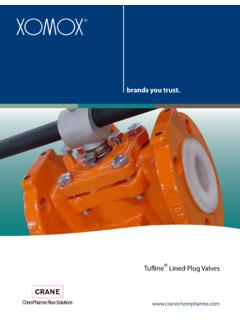Transcription of A Price-Stable Cryptocurrency for Next-Generation Payments
1 A Price-Stable Cryptocurrency for Next-GenerationPaymentsConnor LinConsenSysGavin MaiStanfordMiles AlbertHashgraphSamuel TrautweinStanfordLast Updated: April 3, 2018 Version: Introduction52 Use Cases for Carbon63 How Carbon Implements Price Measuring the Exchange Rate .. Aztec Model .. Credits .. Market Dynamics .. Benefits .. Powered by Hedera Hashgraph ..124 Payments PayPal/Braintree: .. AliPay: .. SWIFT: .. Ripple: .. Western Union: ..145 Why the Dollar? The Dollar as a Proxy: .. Bootstrapping: .. The Oracle Problem: .. CPI as a Longer Term Solution: ..166 Stablecoin Tether: .. BitShares: .. MakerDAO: .. Basecoin: ..18 Page Fragments: .. Seigniorage Shares: ..197 Team208 Disclosure21 Page 3 AbstractCryptocurrencies with deterministic supply such as Bitcoin and Ethereumare extremely volatile. Changes in coin demand reflect on coin price, whichdiscourages its use for basic economic needs like paying bills and buying cof-fee, not to mention more complex needs like loans and insurance optimal stablecoin needs to be Price-Stable , programmable, highly ef-ficient and presents a dynamic value transfer protocol for creating arbitrar-ily complex logic, which contextualizes value transfer while substantiallyreducing resolution costs ( chargeback fees and refunds), increasingeconomic efficiency.
2 We achieve these properties through an elastic supplyengine that closely correlates Carbon to$1 using a decentralized oracle, adual token model and optimal risk-to-reward present Carbon, a Price-Stable Cryptocurrency for Next-Generation 41 IntroductionBitcoin is the world s first widely used peer-to-peer payment network without acentral authority. However, it has since become more of a digital gold due to afixed 21 million coin supply. This makes it extremely volatile as changes in coindemand cause price fluctuations. Furthermore, Bitcoin is also a poor medium ofexchange because it has slow transaction speeds (around 3 tx/sec) compared toVisa (around 2000 tx/sec) and cannot handle the throughput required to be acompetitive address Bitcoin s limitations, hundreds of new cryptocurrencies have beendeveloped since 2009, including Ethereum, Ripple, Litecoin, and Dash. Eventhough these cryptoassets have improved scalability, none have attained price-stability that is essential to it is possible for a decentralized Cryptocurrency to be trustless, Price-Stable and scalable, why would anyone use it?
3 Opponents argue that a Price-Stable Cryptocurrency does not functionally offer substantial improvements forthe average user. After all, most people are content paying for their coffee usingcash or this is a true sentiment, the same could be said of Bitcoin and buy digital gold when one can buy physical gold? The reason why is dueto the allure of decentralization. There has never been a time in history wherestrangers could trust each other, especially with regards to decentralized solution to money would entail transparency, immutability, highavailability and security, in addition to being programmable. Furthermore, aglobally-accessible Price-Stable Cryptocurrency has tremendous value in coun-tries with hyperinflation, such as Zimbabwe, Greece, and 5 Stablecoins are a class of cryptocurrencies that seek to maintain price stabil-ity with respect to a value indicator. The value indicator is typically the are many ways stablecoins achieve price stability.
4 Some stablecoins relyon a 1:1 fiat backing (Tether). Other stablecoins rely on collateral in the formof gold, Bitcoin or other Cryptocurrency assets to back their value (MakerDAO).One last form of stablecoin relies on a liquid market of bonds to expand and con-tract coin supply to create stability (Carbon and Basecoin). Each method has itsmerits and shortcomings, as we will discuss in a later section. Ultimately, Car-bon s solution is more scalable than collateral-backed models and more robustthan existing proposals for unbacked Use Cases for CarbonProgrammable Money:Carbon has the unique property of being both trust-less and fully programmable through smart contracts. All value transfer hascontext and enables a higher degree of information encoding into the transac-tion ( escrow, chargeback fees, fund-release triggers, etc). Carbon expandsthe horizons of what money can be and the most powerful customizations arelikely ones that we haven t even thought of Pair:There is great demand for a stable trading pair for the cryp-tocurrency community.
5 This is demonstrated by Tether s current$2B+ MarketCap and$2B+ average daily trading volume. Carbon will be partnering withcryptocurrency exchanges to implement CUSD as a trading Payment Network:We believe Carbon has the potential to be foun-dational for global Payments , serving as a unit of account, a store of value, anda medium of exchange. The key characteristics required are price stability, liq-uidity, and also allows arbitrarily complex logic to be encoded into transfers. ThisPage 6contextualizes Payments and reduces resolution cost; one can trustlessly createpayrolls, subscription services, event-triggered Payments and much more usingCarbon s protocol. An example of an event-triggered payment would be if a userclicks an ad, the payment can be transferred per click rather than at the end ofthe month through a billing account. Payment disputes can easily be resolvedthrough escrow contracts and programmable Future Decentralized Applications:Carbon stablecoins can beused as gas/payment for using decentralized applications, instead of those appli-cations issuing their own native currency.
6 A Price-Stable Cryptocurrency may beused in decentralized applications involving time-sensitive smart contracts, suchas betting, insurance, and lending markets. Carbon is in the process of securingpartnerships with several dApps to adopt our Against Fiat Inflation:Carbon s CUSD stablecoin will serve as ahedge against fiat inflation like the Venezuelan Bolivar. Holding Bolivars ismuch more inflationary than holding USD, which has 3% yearly inflation. Bygiving anyone with an internet connection access to CUSD, Carbon globalizesaccess to price-stability. Our long term vision is creating a stablecoin separatefrom national fiat currencies and instead pegged to a basket of goods, ultimatelyserving as a hedge against the dollar Economy:Carbon will be organizing efforts to onboard newcryptocurrency companies to accept Carbon stablecoins as a form of fundraisingthrough token sales. This will drive demand for Carbon and give new cryptocur-rency companies stability in Markets:We envision lending markets to be built on top of Car-bons base infrastructure layer, enabling global access to secure and price-stableloans.
7 This will enable people to effectively and efficiently obtain capital withminimal 7 Financial Products:Carbon s Price-Stable Cryptocurrency will support a net-work of trustless, decentralized credit/debt markets, options, futures and otherderivative contracts. We envision Carbon as the foundation for the next gener-ation of financial products that leverage distributed ledger How Carbon Implements Price StabilityThe Carbon protocol incorporates an elastic supply policy to adjust the quantitysupply of the coin in response to its market demand as a means of achievingprice-stability around$ Measuring the Exchange RateCarbon utilizes a decentralized schelling point scheme to achieve distributed con-sensus on Carbon s exchange rate. Every 24 hours, also known as the rebasementperiod, a schelling point scheme is initiated where nodes submit bids for whatthey believe the true exchange rate of Carbon to be. Each bid is weighted bya collateral, denominated in Carbon.
8 At the end of the 24 hours, bids are to-taled and the protocol takes a weighted average of the bids. Anyone who bidsoutside the 25th and 75th percentiles will have their balances slashed. Anyonewithin the 25th and 75th percentiles receive a normal distribution of the loser sbalances, with the highest reward distribution at 50% and normally diminishingon the right and left Aztec ModelCarbon introduces a price-stability model called the Aztec model. Unlike mostelastic supply stablecoin models, the Aztec gives 100% of the upside in expan-sionary cycles to users who helped the system contract through burning theirtokens. In this way, there is strong incentive for users to assist in Carbon sprice-stability the Aztec model, there exist two tokens:Page 81. Carbon Stablecoin (CUSD)2. Carbon CreditWe are introducing the Carbon stablecoin, which will be closely correlated withthe price of$1. The volatile coin is called Carbon Credit and is a token that isused to absorb demand and price shocks to ContractionWhen coins are trading for less than$1, Carbon Credits are auctioned off viaa reverse dutch auction to market participants willing to burn their stablecoins,creating upward price pressure, appreciating the stablecoin price back up to$ the oracle indicates that the exchange rate is below a dollar, the smartcontract will initiate an auction for new carbon credits.
9 The CUSD received willbe burned, diminishing supply thus raising the ExpansionWhen coins are trading for more than$1, coins are distributed to Carbon Creditholders pro rata, creating downward price pressure, bringing the stablecoin priceback down to$ system has several key benefits: It has a very simple ROI formula, makingthe Carbon Credits easy to price which will translate to a higher degree of pricestability. As the token supply should gradually expand at a diminishing rate(volatility should go down as volume increases) so we anticipate over the longerterm a pricing effect similar to that of other logarithmically diminishing coinssuch as Bitcoin and Ethereum. We expect this system to result in more efficientperformance of the Carbon Credit distribution formula due to the simplicity ofcalculating Carbon CreditsCarbon Credits represent perceived market demand for expected growth of Car-bon s network, as well as serving the important utility for expanding Carbon sstablecoin supply.
10 They are rewarded to market participants who burned theirstablecoin during contractionary phases and have theoretically infinite Market DynamicsRebasement Periods:Rebasement periods are currently set to 24 Tolerance in Long Contractionary Cycles:With any unbacked stablecoin, there is the potential problem of long periods ofcontraction or negative growth. These potential winters can reduce confidencein owning Carbon Credits. Supporters who believe the network will expand inthe near future will help contract supply to maintain price parity. Fundamen-tally, there are two viable are zero-growth economies in the context of stable-coins?General economic opinion suggests that zero-growth economies are impos-sible as any amount of work to make a closed-energy system more efficientcreates value and thus positive growth. Basecoin provides excellent analy-sis as to far as stablecoins are concerned, it s possible to see zero-growth rateif competitor stablecoins gains larger market momentum and s why it s imperative that the ideal stablecoin has the best risk/rewardincentives as well as base infrastructure to support a truly scalable andminimal fee stablecoin.






